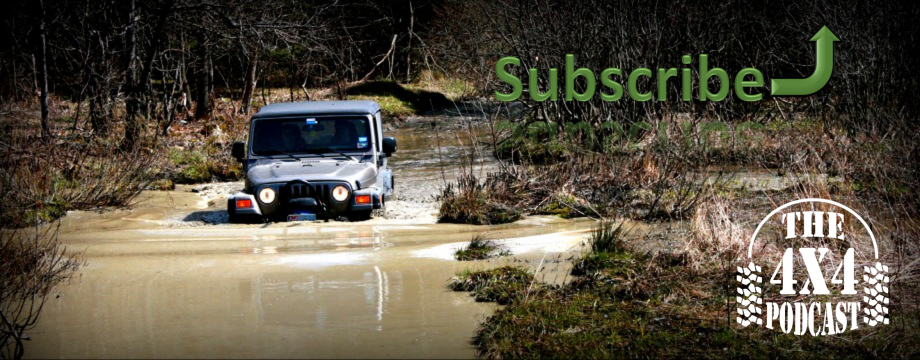Picking an Adventure Rig – Another Rig
There have been many occasions where Craig, Derek and I have recommended that you travel in a group while in the back country. Ideally, that would mean more than one vehicle, not just more than one person. I enjoy offroading with clubs and groups but I am a big supporter of offroad adventures as a family activity. Some clubs can become like family, but the reality is that large group dynamics frequently result in tension among the members. I’m also not a fan of traffic jams on the trails.
One way to achieve the overall goal of getting more seating and cargo space is by adding another vehicle. All the previous options that we’ve looked at in this blog series have focused on expanding the capacity by using a larger vehicle. Simply adding another vehicle would accomplish the goal as well as provide a number of other benefits. Anyone who has served in the military may be familiar with the phrase, “two is one and one is none.” This adage is also a common among race teams because it is a great way to accomplish the redundancy necessary to make it home safely.
While I’m not really looking to explore the merits of what a second adventure rig would be, I am going to jump into the various advantages and disadvantages.
Advantages
- Provides necessary seating and cargo space
- Supports safe vehicle recovery from event more situations than with a single vehicle
- Truly involves my wife as a critical member of the team because she’ll be the other drive…at least for the next 8-9 years till my oldest daughter can legally drive
- Adds another option to daily driver pool
- Provides redundancy of systems and spare parts
- Another vehicle to modify
Disadvantages
- Another vehicle to move during PCS (Permanent Change of Station in military terms) season
- Another vehicle to maintain/modify
- Roughly doubles the fuel cost for each adventure
- Two vehicles always requires two drivers
As I mentioned in previous posts, the reason I have a flat bed trailer to tow my XJ is so that my various cross-country moves can be accomplished by a single driver. The Suburban does take a bit of a hit to the MPGs when towing but there is still an overall savings over driving two vehicles. If I add a third vehicle to my personal fleet, them I’m back to driving two vehicles every time I move. This moving idea may seem like it shouldn’t be that big of a deal because, how often does someone actually move?
Here’s a sneak peek into military life. In mid-2004, my family moved from Idaho to Maryland. At the end of 2004, we moved to Texas. Two years later, we moved to California. By the end of 2007, we were back in Texas. Mid 2008, we moved to Virginia and then overseas to Korea for a few years. The Army only paid for the storage of one vehicle which meant that I had to come up with a three year vehicle and trailer storage plan. After finally moving back to the United States, I drove across half the country just to pick up my stuff and move it to upstate New York. And of course, I’m actually just a few months away from another move from New York to Kansas. That makes seven moves in ten years. So yea, moving vehicles and trailers is something that needs to be considered.

I’m sure you know what is required to keep your offroad vehicle running; now imagine doubling your maintenance efforts. Ideally, the second vehicle would share components so that fewer trail spares would need to be carried, but if that isn’t the case then that really blows out the maintenance requirements.
When planning adventures, cost is always a factor to consider since I don’t have a money tree growing in the backyard. Fuel costs are one of the biggest expenses because these offroad vehicles are generally thirsty vehicles. Please excuse me while I lead you through some math. If you plan for a 500 mile trip in a vehicle that gets 14 MPG, that trip will require 36 gallons. 36 gallons at $3.85 per gallons will cost a total of $142.45. Operating that one vehicle for this trip (not including maintenance expenses) will work out to $0.29 per mile.
If you are driving two vehicles that get 14 MPG then that same 500 mile trip will require 72 gallons. Everything doubles and your cost per mile goes to $0.60 and the whole trip will cost $285! Add in the cost to maintain these vehicles and this “another vehicle” course of action becomes rather costly, very quickly.

The last point to discuss is the requirement for two drivers. Right now, my kids are far too young to drive. That means that my wife and I would always be behind the wheel. I have found that it is very helpful to have someone in the passenger seat to assist with grabbing snacks and drinks while cruising around. It is also extremely helpful to have that spotter available and ready to hop out and check things out. My wife has spent a bit of time driving offroad because, as we’ve discussed previously (check out episode 20), but I know she prefers to be the co-driver/navigator.
So that’s a lot to think about and consider. What are your thoughts on adding an additional adventure rig to the fleet? What vehicle would you choose and why?


